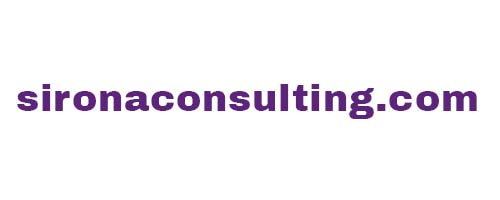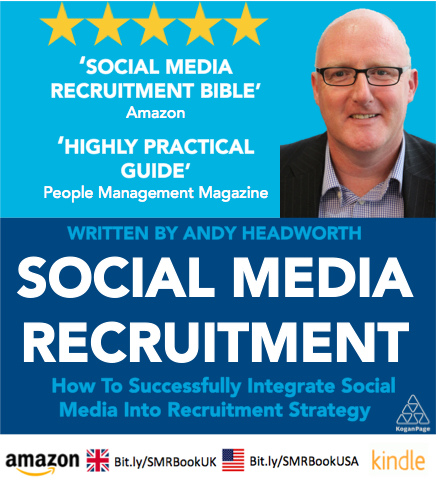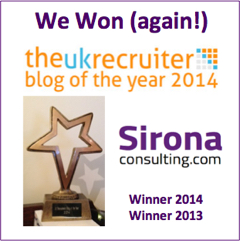LinkedIn Is Still No.1 But Only If You Use It Correctly
LinkedIn is seemingly taking a lot of punches at the moment from the very industry that benefits extensively from it. But for very many recruiters it is a huge untapped resource that is still - unbelievably - not taken as seriously as it should. In my opinion, it is definitely taken for granted across recruitment and HR, yet the data and insights it provides about industries, companies and employees is second to none and often available no where else.
We will all moan (including me) about LinkedIn’s failings - whether it be the InMail spam we receive, fake profiles, ‘overnight’ platform updates with no notification, lack of search functionality in the main ‘stream’, Groups rule changes making them unfriendly, the ‘stream’ becoming more like Facebook, LinkedIn’s lack of action on fakers spammers, and of course many other complaints too long to list here!
BUT, let’s not forget what a great platform LinkedIn still is. After all, for many industries, it is STILL THE DEFAULT online social network that recruiters go to before anything else. Where do you go when you are either recruiting or looking for data about a person or a company? …… me too!
LinkedIn is not the only social network you should be using as I have covered previously, but with the sheer amount of employer and employee data LinkedIn holds, it has to be the place where you start your recruiting or research journey. (The caveat here is understanding the demographics of your target audience on LinkedIn e.g. it is not the best platform for apprentices for example. Also you need to consider whether certain industry sector target candidates are active on the LinkedIn. Other more specialist and specific platforms might be a better place to start for them).
To make best use of LinkedIn you have to use it properly. It is definitely an example of, ‘the more you put in, the more you will get out of it’. Like most recruiters, sourcers and researchers, I probably spend more time using the platform than most, so have a better appreciation (from experience) for what is important and how it can be used more effectively. Here are seven ways you can improve your own LinkedIn experience - it does come with a warning - it will require some homework from you!
- Focus on your profile - it is so important for any success you wish to have on LinkedIn. You may be a recruiter wanting candidates to find you, a sales person selling services/products, a speaker wanting event organisers to find you or independent consultants looking for that next project (remember me 🙂 ). It is important to consider that many searches start from Google, as LinkedIn is indexed so well in the search engine, so make sure that all these aspects of your own personal profile (your personal brand) are as good as they can be:
- Headline
Would I know what you do if I landed on your profile? It needs to be explanatory and contain your relevant keywords that represent what you do and what you want to be found for. You only have 120 characters so make them count. - Picture
Make sure you have a picture there for a start! It should be a smiling face looking at the camera. No wedding pictures, beach shots, cars, cats, dogs etc - Summary
This is the section most people will read about you - so write it like it counts. You have 2000 characters to tell people what you do, what you are like, what you want to do, some of your key achievements etc. Two tips here - first, add in your contact details if you want to be contacted, as it makes it easier for people to find them, and secondly, make sure it has a good spattering of all your important keywords within it. - Each Job
Make sure the job titles you use are relevant to the rest of the world. While I don’t advocate changing titles too much, it would make sense to use words that others use and are more likely to search for. Not all recruiters are great at searching job title synonyms, so make it easy for them. Also remember you have 2000 characters for each job - so tell people what you do and what you have achieved - no harm in a little self promotion. - Multimedia
At the end of every section LinkedIn allows you to have a wide range of content - it might be presentations, pictures, Word documents, videos, pdf’s etc It helps make your profile stand out and gives depth to your knowledge, experience and personal brand. - Groups
While they may be less useful than before, being a member of a number of groups does help you when you are searching for people (increases your search pool), and helps people find you for the same reason. You can be a member of up to 50 groups on LinkedIn, so maybe it is time to join a few more groups. A tip on doing this - if you don’t want to be inundated with notifications after joining a bunch of them, you can turn off all the notifications in the settings tab.
- Headline
- Learn how to search properly - stop being lazy with your searching and learn how to use the Advanced search effectively. Each aspect of the search (Keywords, Title, Company, Name etc) has the capacity of lengthy boolean search strings - AND, OR, ” ” and ( ) - so make sure you understand how to use them. Here is a Boolean beginners guide from Social Talent that might help.
Remember user generated content comes into play here and if you are searching for someone, It isn’t what you think a candidate is, is it what they think they are themselves!
If you haven’t tried the Alumni search on LinkedIn yet, then take a look, as it is one of the most underused yet powerful search functions on LinkedIn. Go to the ‘My Network’ tab on the top toolbar and go to the dropdown ‘Find Alumni’ to test it out. It is a real-time search meaning that as you change any criteria it updates all the many different results immediately. - Don’t believe the InMail hype - the fact is they fail more times than they work! Even LinkedIn agree with that fact. They are of course a useful tool if people actually ever see them to read them. The truth is you cannot rely on InMails to be read in the first place so always try a secondary method to reach them. Always try and find their email address if you can - here are some tools I use to do that for free.
- Status updates are not a waste of time - if you don’t post any updates to your LinkedIn profile, or simply can’t be bothered you should reconsider it! Every time you post content it is shared in the streams of you all the people in your network. If it is interesting and relevant they might read it, like it or even share it. The LinkedIn stream is controlled by an algorithm and shows people what it thinks is relevant to them. By posting content regularly you will make your profile and content more visible to your network, and likely driving more traffic to your profile (if that is an objective).
- Pulse articles - if you have something to say or share (not jobs!) then write an article (the Publish a Post tab next to the Share an Update tab) on Pulse on LinkedIn. Immediately when it is published it is added to the top of your own LinkedIn profile, making it easy for people to see and read. And of course you can then share it via an update to your network. The potential reach of the LinkedIn Pulse network is huge, so if you don’t write a blog but have subjects you want to write about, this is a great way of getting the posts out to a wider audience. A tip on these - make the headline short and punchy and add a eye catching image.
- Slideshare - this is owned by LinkedIn and has a huge volume of traffic to its site. It is a great site to share presentations, video, documents, pdf’s, white papers, etc. As it is part of the LinkedIn family, as soon as you post content here, it is also posted to your LinkedIn profile, effectively giving you twice as much ‘SEO juice’. Slideshare is primarily a B2B site and as such is hugely relevant to the content shared and posted on LinkedIn as well.
- Rack up some recommendations - we are living in a world requiring social proof. There is nothing better than having a number of clients, candidates and customers recommending you to others. It is one of the most powerful forms of referral and can sometimes make the difference between someone choosing to contact you or not.
You may have become disillusioned (or even totally fed up) with using LinkedIn, but there are still so many benefits to keep using this huge professional network. Even though I actively use Facebook, Twitter, G+ and other sites for sourcing people and companies, I will always revert back to LinkedIn as a cross-reference. And if you are researching or talent mapping, a LinkedIn/Facebook dual approach is a very powerful combination indeed!
As I said earlier - the more you time and effort you put into your LinkedIn profile and presence, then the more benefit you will derive from it.
If you are still having problems getting the most out of LinkedIn in your business, then maybe it is time for you to share some of your nice coffee with me. Just send me an email and let’s have a chat about how I could help you.
And finally if you haven’t got your copy yet, don’t forget to buy a copy of my new book where there is a full and detailed chapter on candidate sourcing including using LinkedIn.



